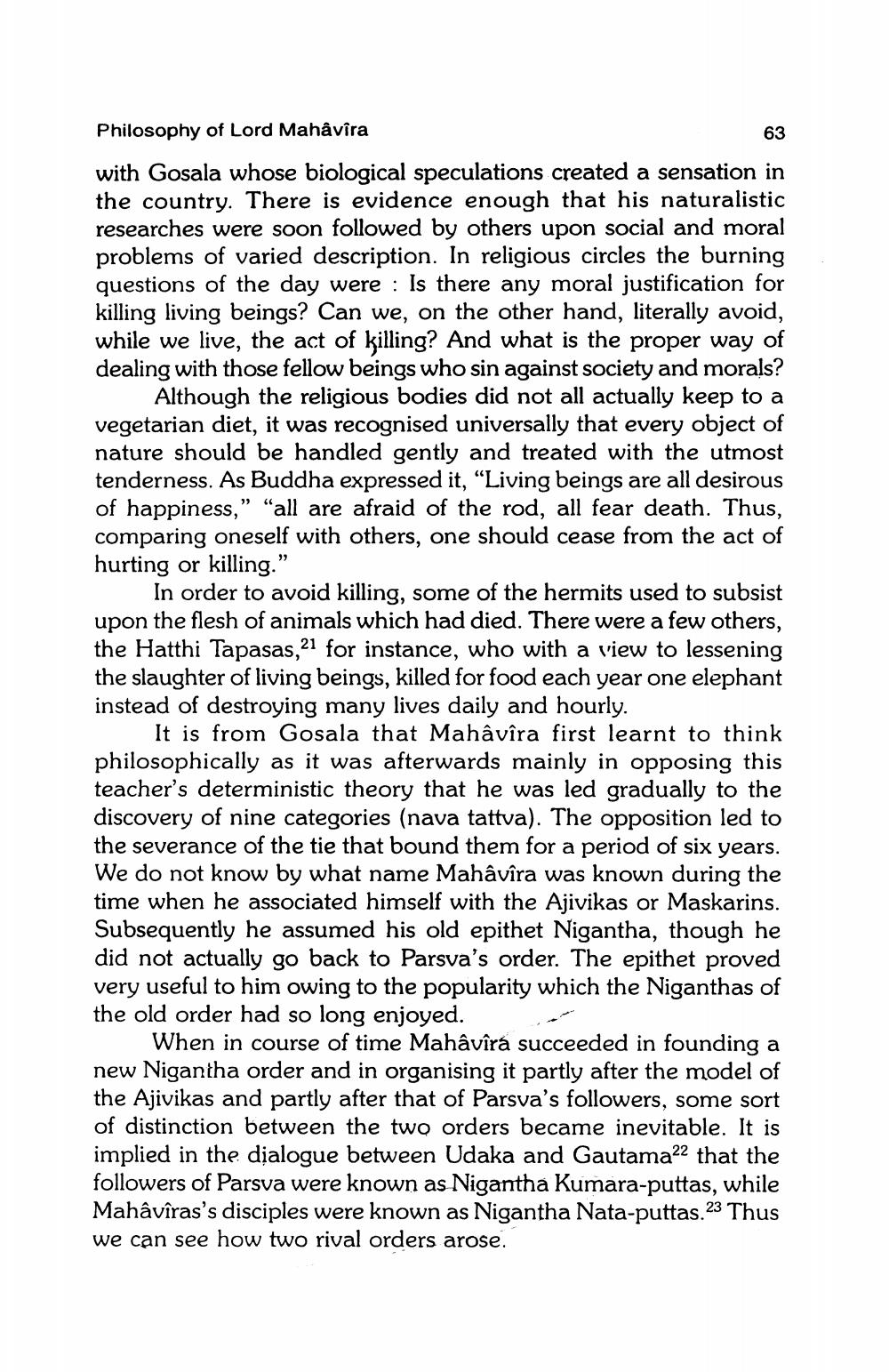________________
Philosophy of Lord Mahavira
63
with Gosala whose biological speculations created a sensation in the country. There is evidence enough that his naturalistic researches were soon followed by others upon social and moral problems of varied description. In religious circles the burning questions of the day were : Is there any moral justification for killing living beings? Can we, on the other hand, literally avoid, while we live, the act of killing? And what is the proper way of dealing with those fellow beings who sin against society and morals?
Although the religious bodies did not all actually keep to a vegetarian diet, it was recognised universally that every object of nature should be handled gently and treated with the utmost tenderness. As Buddha expressed it, “Living beings are all desirous of happiness," "all are afraid of the rod, all fear death. Thus, comparing oneself with others, one should cease from the act of hurting or killing."
In order to avoid killing, some of the hermits used to subsist upon the flesh of animals which had died. There were a few others, the Hatthi Tapasas, 21 for instance, who with a view to lessening the slaughter of living beings, killed for food each year one elephant instead of destroying many lives daily and hourly.
It is from Gosala that Mahâvîra first learnt to think philosophically as it was afterwards mainly in opposing this teacher's deterministic theory that he was led gradually to the discovery of nine categories (nava tattva). The opposition led to the severance of the tie that bound them for a period of six years We do not know by what name Mahâvîra was known during the time when he associated himself with the Ajivikas or Maskarins. Subsequently he assumed his old epithet Nigantha, though he did not actually go back to Parsva's order. The epithet proved very useful to him owing to the popularity which the Niganthas of the old order had so long enjoyed.
When in course of time Mahâvîra succeeded in founding a new Nigantha order and in organising it partly after the model of the Ajivikas and partly after that of Parsva's followers, some sort of distinction between the two orders became inevitable. It is implied in the dialogue between Udaka and Gautama22 that the followers of Parsva were known as Nigantha Kumara-puttas, while Mahâvîras's disciples were known as Nigantha Nata-puttas.23 Thus we can see how two rival orders arose.




